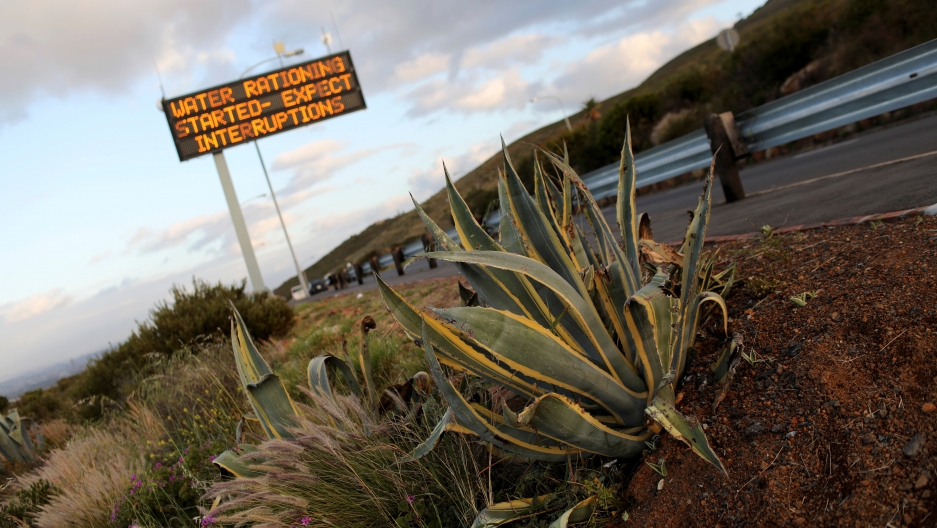
JOHANNESBURG — Murad Ebrahim turned on the shower in his gym locker room. The newly-installed showerhead delivered a gentle stream, then shut off shortly after.
“Two-minute showers,” said Ebrahim, 39, a publishing house executive. “You barely get to soap your body.”
In the shower stalls in his Cape Town gym, buckets catch excess water that doesn’t go down the drain. When they fill up, the gym gives them to customers for flushing toilets.
Cape Town and the surrounding region of South Africa are suffering from a severe drought. Three years of low rain levels and an unseasonably dry winter mean that average dam levels are just over a quarter full. The metro area of 3.7 million has less than 90 days’ worth of water in its reservoirs, making it the first major city in the world that could run out of water.
Cape Town residents and visitors can only use 13 gallons of water per day starting in February. For those who consume more, the city’s water utility will charge a special levy that is three times higher than the current rate.
The average American uses 88 gallons of water per day, according to the Environmental Protection Agency.
Residents here are awaiting “Day Zero,” when water supplies in Cape Town’s reservoirs drop below 13.5%. Mayor Patricia de Lille estimated recently that the day will likely be April 21. Low rainfall and high consumption, despite the city’s best efforts to promote conservation, are taking their toll, she said.
“We have reached the point of no return. Despite our urging for months‚ 60% of residents are callously using more than the 23 gallons per day,” De Lille said in a Jan. 18 news conference. “It is quite unbelievable that the majority of people do not seem to care and are sending all of us headlong toward Day Zero. At this point we must assume that they will not change their behavior.”
The city has already designated 200 collection points where residents will stand in line, under army and police supervision, to collect six gallons of water daily meant for washing, cooking and personal hygiene. Each collection point will accommodate around 20,000 people per day.
The city has options to address the crisis and warn the public, said Kevin Winter of the University of Cape Town’s Environmental and Geographical Science Future Water Institute. “There’s an extraordinary amount of commitment from city officials and they will be really unlucky to get to Day Zero,” he said.
Winter has been working with the city to find alternative water sources, most of them aquifers, or water saturated in rock deep in the ground. Millions of gallons of water could be in the region’s aquifers, he said.
“We know where the high storage of water lies. We know how far to dig. We know the amount of water that is stored there,” Winter said.
But digging for water doesn’t come cheap. The Cape Town water utility’s deficit has ballooned to $138.3 million, or more than half the total budget for the year, based on the latest consumption figures for October 2017, officials said. That number is widely expected to rise.
There have been calls from the public that the city should have had better contingency plans for a drought, given the Western Cape is a water-scarce environment with a Mediterranean climate. But Winter said the chance of the region experiencing a three-year drought, given the historical data was one in 1,000.
Cape Town even received a C40 Cities Bloomberg Philanthropies Award in 2015 for its conservation program, beating 91 cities.
Recently, Roxanne Josephs, 29, and her dog, Ruby, have both cut down on their shower time. She washes Ruby only once or twice a month.
“I’ve started using baby powder on her because we walk, run and hike a lot,” said Josephs, a law student at the University of South Africa. “I also only take her out when it’s cool outside, so she doesn’t need as much water and the same applies for me.”

